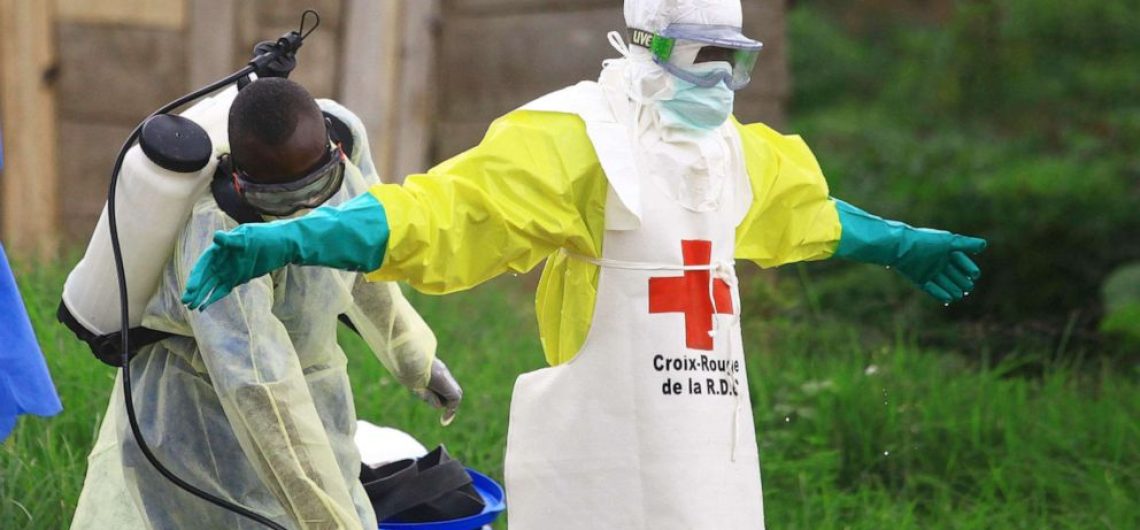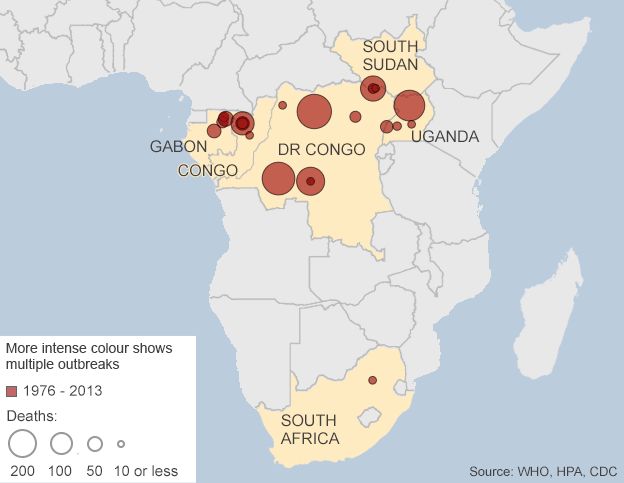Between 2014 and 2016, the countries of West Africa faced a devastating Ebola outbreak that sent shockwaves of fear and despair throughout the region. This unprecedented and cataclysmic event left no one untouched, as the effects of the outbreak reverberated through communities and tore apart the fabric of society. The World Health Organization, considered the beacon of global health, was confronted with an enormous challenge, as it grappled with an epidemic that would go down in history as the largest, most severe, and most intricate the world has ever witnessed. The sheer scale of the outbreak was staggering, with over 28,000 individuals succumbing to the ruthless clutches of this merciless disease. Families were ripped apart, dreams were shattered, and hopes were extinguished as the death toll relentlessly climbed higher and higher. Tragically, the lives of 11,000 people were claimed before the emergency could be brought under control in 2016, leaving behind an indelible mark of sorrow and mourning that will forever haunt the collective memory of West Africa. Within the confines of Guinea, Sierra Leone, and Liberia, the epicentre of the catastrophe, the majority of cases emerged, painting a harrowing picture of despair and desperation. Communities were wracked with fear, with every individual living in constant terror of falling victim to this silent and insidious killer. The once vibrant streets and bustling markets turned into desolate and ghostly remnants of their former selves, as the heavy weight of the epidemic permeated every corner of daily life. Amidst the chaos, heroes emerged – brave men and women who faced the disease head-on, risking their own lives to provide care and support to the afflicted. Doctors, nurses, and countless volunteers fought valiantly, working tirelessly day and night to stem the tide of this relentless onslaught. Their selfless acts of heroism and sacrifice embodied the resilience and unwavering spirit of the West African people, standing as a testament to the enduring power of humanity in the face of unimaginable adversity. In the aftermath of this nightmare, lessons were learned and harsh realities were confronted. The international community was forced to acknowledge the fragility of global health systems and the urgent need for robust preparedness in the face of emerging infectious diseases. Institutions were scrutinized, policies were reevaluated, and collaborations were forged to ensure that such a devastating outbreak would never again ravage the lands of West Africa. As the dust settled and the region gradually rebuilt itself, a collective determination emerged to heal the wounds inflicted by the Ebola epidemic. Communities united, standing hand in hand to overcome the trauma and devastation caused by this unprecedented disaster. With renewed hope and an unwavering spirit, West Africa rose from the ashes, stronger and more resilient than ever before. The legacy of the Ebola outbreak serves as a reminder of the fragility of human existence and the interconnectedness of our world. It is a clarion call for continued vigilance, collaboration, and proactive measures to prevent, detect, and respond to future health crises. West Africa, once plagued by the darkest of times, now stands as a beacon of resilience and a shining example of human triumph over adversity.
What is Ebola?
The Ebola virus is an extremely dangerous and deadly collection of viruses that are responsible for causing a severe and life-threatening illness known as hemorrhagic fever. This illness is characterized by the occurrence of both internal and external bleeding, leading to a multitude of complications and risks. The exact mechanisms and behaviour of this virus are still not fully understood by medical professionals and researchers. The initial stage of infection involves the manifestation of certain symptoms, including but not limited to fever, muscle weakness, sore throat, and headaches. These early signs are often mistaken for common ailments, which can lead to delays in diagnosis and treatment. However, as the disease progresses and reaches its more severe stages, the infected individuals begin experiencing more alarming and distressing symptoms. These symptoms include vomiting, severe diarrhoea, excruciating body aches, and intense nausea. As the Ebola virus continues to ravage the body, it can cause significant damage to vital organs such as the kidneys and liver. This disruption of organ function can ultimately lead to the occurrence of both internal and external bleeding. The combination of these symptoms and complications poses a grave threat to the affected individuals, often resulting in a high mortality rate. The primary mode of transmission for Ebola is direct contact with the bodily fluids of an infected person. This includes blood, saliva, urine, vomit, faeces, and even sweat. It is crucial to note that individuals who are infected with the Ebola virus are not contagious during the incubation period. This phase typically lasts around eight to 21 days after initial exposure. It is only after the manifestation of symptoms that infected individuals become contagious and capable of spreading the virus to others. Given this information, it becomes evident that healthcare workers and the families of infected individuals are at the highest risk of contracting the Ebola virus due to their close proximity and constant exposure to bodily fluids. Contrarily, the risk of transmission to tourists and casual contact remains relatively low. As scientific research continues to unfold, experts believe that bats serve as the probable natural reservoir of the Ebola virus. Although the exact transmission pathway from bats to humans is still unclear, it is believed that contact with bat excrement or consumption of bushmeat derived from infected animals could be contributing factors. The ongoing investigation and study of the Ebola virus are of paramount importance to global health. Medical professionals, researchers, and healthcare authorities must work together diligently to develop effective treatments, preventive measures, and strategies to combat this devastating illness. The ultimate goal is to prevent further outbreaks, protect vulnerable populations, and save lives.
Is There Ebola in Tanzania?
We understand your concerns about your health and want to assure you that climbing Kilimanjaro is a safe activity. The risk of contracting the Ebola virus is extremely low and does not pose any immediate threat. Our top priority is the well-being of our clients, and we constantly monitor any situation that could potentially impact their health. In the unlikely event that you have future concerns about ebola, we highly recommend purchasing trip insurance, which is a mandatory requirement for participating in our trips. By opting for the additional “Cancel for Any Reason” coverage, you would be eligible for reimbursement of expenses. It is important to note that the majority of cases related to the outbreak have been reported in Guinea, Sierra Leone, and Liberia, with some isolated instances in Nigeria, Mali, Europe, and the U.S. However, it is reassuring to know that there have been no reported cases of ebola in Tanzania. As of September 2019, there were rumours of one suspected fatal case in Dar es Salaam, but Tanzania’s health minister, Ummy Mwalimu, confirmed that there were only two suspected cases, which tested negative for the virus.
How Close is Ebola to Tanzania?
As stated earlier, Tanzania is currently free from the presence of Ebola and has never experienced any instances of Ebola transmission. The ongoing outbreak in Western Africa is geographically distant from Tanzania, much like Europe, as depicted on the map, with a considerable distance of over 3,300 miles. The likelihood of contracting Ebola while in Tanzania is almost non-existent.
What are the Odds of Dying from Ebola?
The likelihood of succumbing to Ebola is extremely low for individuals residing in the United States, with odds of 1 in 3,934,300, equivalent to a mere 0.000002%. Despite the unfortunate fatalities of a Sierra Leone doctor in Nebraska and a visitor from Liberia in Dallas, the chances of dying from Ebola are overshadowed by nearly all other available alternatives.
Symptoms of Ebola
Ebola symptoms typically appear within 2 to 21 days after exposure to the virus, with an average incubation period of 8 to 10 days. The symptoms can range from mild to severe and may include:
- Fever: Ebola often begins with a sudden onset of fever, typically greater than 38.6°C (101.5°F).
- Fatigue: Feelings of extreme tiredness or weakness are common early symptoms of Ebola infection.
- Muscle Pain: Individuals infected with Ebola may experience severe muscle pain, often described as myalgia.
- Headache: Persistent headaches, sometimes severe, are a common symptom of Ebola virus disease.
- Sore Throat: Some patients may develop a sore throat or difficulty swallowing.
- Gastrointestinal Symptoms: Ebola infection can cause nausea, vomiting, abdominal pain, and diarrhea. Diarrhea may be bloody in some cases.
- Rash: A rash may develop, typically occurring around 5 to 7 days after the onset of symptoms. The rash is often maculopapular, consisting of flat, red spots that may become raised or fluid-filled.
- Chest Pain: Patients with Ebola may experience chest pain or discomfort, which can be associated with difficulty breathing.
- Internal and External Bleeding: Severe cases of Ebola virus disease may lead to bleeding from mucous membranes (such as the gums and nose), as well as internal bleeding. However, bleeding is not always present in Ebola cases.

It’s important to note that the symptoms of Ebola can resemble those of other infectious diseases, such as malaria or influenza. If you develop symptoms suggestive of Ebola virus disease and have recently traveled to or lived in an area where Ebola is present, it’s crucial to seek medical attention immediately and inform healthcare providers of your travel history. Early diagnosis and prompt medical care can improve the chances of survival and help prevent the spread of the virus to others.
How to prevent Ebola
Preventing Ebola infection involves several key measures to reduce the risk of exposure to the virus. Here are some important steps to prevent Ebola:
- Avoid Contact with Blood and Body Fluids: Ebola virus is spread through direct contact with the blood, body fluids (such as saliva, sweat, urine, feces, vomit), or tissues of infected individuals. Avoid close contact with infected individuals and their bodily fluids, especially if they are showing symptoms of Ebola.
- Practice Good Hygiene: Wash your hands frequently with soap and water, especially after touching potentially contaminated surfaces or objects. If soap and water are not available, use an alcohol-based hand sanitizer with at least 60% alcohol.
- Use Personal Protective Equipment: If you are caring for someone with Ebola or are in a healthcare setting where Ebola patients are treated, use appropriate personal protective equipment (PPE), including gloves, gowns, masks, and eye protection. Follow strict infection control protocols to prevent exposure to the virus.
- Avoid Handling Dead or Sick Animals: Ebola virus can be transmitted to humans through contact with infected animals, including primates (such as monkeys and apes) and bats. Avoid handling dead or sick animals, especially in areas where Ebola outbreaks have occurred.
- Practice Safe Burial Practices: In communities affected by Ebola, follow safe burial practices to minimize the risk of transmission. This may include avoiding traditional burial practices that involve close contact with the deceased and ensuring that bodies of deceased individuals are handled by trained personnel using appropriate protective measures.
- Follow Travel Advisories: Stay informed about travel advisories and restrictions related to Ebola outbreaks in affected regions. If traveling to areas where Ebola is present, take precautions to minimize exposure to the virus and follow any recommendations or guidelines provided by health authorities.
- Seek Medical Care: If you develop symptoms suggestive of Ebola virus disease (such as fever, headache, muscle pain, vomiting, diarrhea), seek medical attention promptly. Inform healthcare providers of your travel history and any potential exposure to Ebola. Early diagnosis and treatment can improve outcomes and help prevent further transmission of the virus.
For more accurate info about current and updated outbreaks of Ebola, see the official CDC website.
![]()



Comments